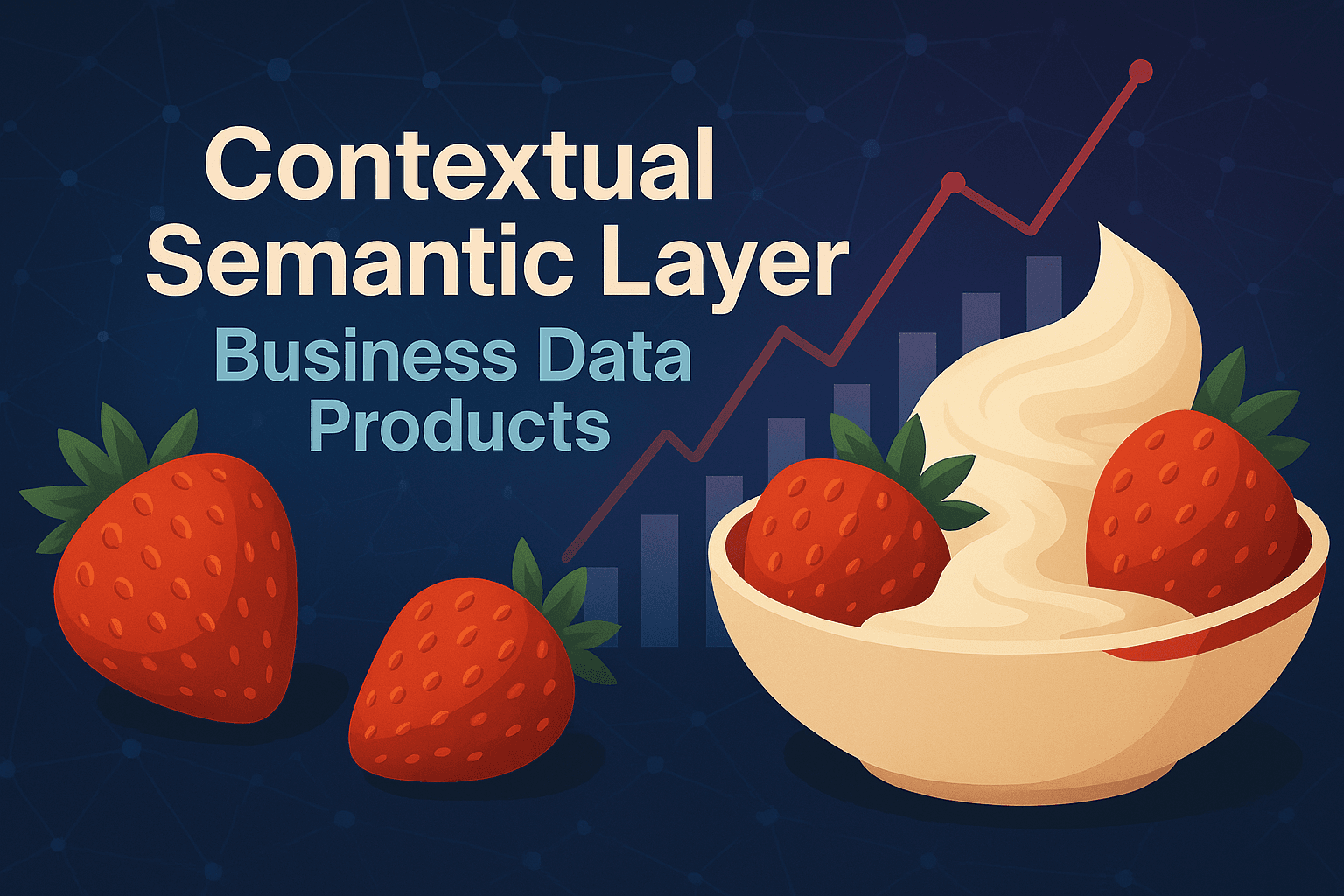Because some things, like strawberries and cream at Wimbledon, just belong together.
From Raw Data to Strawberries and Cream
There are few things in life that fit together so naturally you can't imagine one without the other.
At Wimbledon, it's strawberries and cream.
In AI-powered analytics, it's business data products and contextual semantic layers.
On their own, each is valuable:
Business data products organize and structure data for analytical use.
Contextual semantic layers make that data meaningful and explainable.
But when you bring the two together? You get something magical: trusted, contextualized analytics that humans and machines can both understand.
The Rise of Data Products (and Their Limitations)
Over the past few years, organizations have embraced the architectural modernization towards data fabrics or data meshes and then the associated data product frameworks, treating datasets like products, with ownership, quality, and reusability built in.
It was a necessary evolution. But there's a catch: Most data products are still technical at their core. They make data available but not always understandable.
Ask a data engineer, and they'll show you perfectly modeled schemas.
Ask a business leader, and they'll ask, "But what does it mean?"
That's where business data products come in: data enriched with context, metrics, and business logic so that anyone, not just analysts, can trust and interpret it.
From Data Products to Business Data Products
A business data product goes beyond tables and joins.
It includes:
- Governed metrics ("What counts as 'revenue'?")
- Standardized terminology ("When do we call a customer active?")
- Relationships ("Which products belong to which category?")
- Lineage and policies ("Where did this number come from, and who can see it?")
In short, it embeds business meaning directly into the data, creating assets that both BI tools and AI systems can reason over.
But even that's not the full picture. Because meaning isn't static; it evolves. Which means something needs to constantly maintain that understanding: a layer of contextual intelligence that sits above.
Enter the Contextual Semantic Layer: The AI Interpreter
If business data products are the ingredients, then the contextual semantic layer is the recipe and chef combined.
It connects the dots between your structured data, unstructured documents, KPIs, and knowledge, ensuring that when someone (or some AI) asks a question, the answer carries the right context.
Here's what it adds:
- Data models and knowledge graphs that map relationships between entities.
- Semantic tagging that classifies data by meaning, not just structure.
- Governed business logic that ensures consistency and trust.
- Memory layers that let AI systems remember context across interactions.
The result: when your CFO asks, "How's our pipeline trending in EMEA?" the AI doesn't hallucinate; it understands what pipeline and EMEA actually mean to your business.
Enabling, Not Replacing, Business Data Products
Let's be clear: the contextual semantic layer doesn't create data products; it activates and empowers them.
The foundational data work still happens in your warehouse or lakehouse. But the semantic layer makes those assets consumable by humans and AI alike.
Codd AI's role? To automate and scale that contextual layer by capturing both technical metadata and business knowledge to power explainable, conversational analytics. We sit on top of your existing ecosystem, translating data into business understanding.
From Dashboards to Dialogue
Historically, data consumption evolved from reports → dashboards → self-service BI. Now, we've entered the era of conversational analytics: where users simply ask questions in natural language and receive contextualized answers.
The contextual semantic layer makes that possible by turning business data products into AI-ready knowledge assets: reliable, explainable, and grounded in business truth.
It's not replacing your BI tools; it's augmenting them with understanding.
Why Now? The AI Inflection Point
Generative AI has exposed a fundamental gap: data without context leads to confident hallucinations.
Organizations can't afford that risk, not in regulated industries, not in strategic decisions.
The contextual semantic layer fills that gap.
It's the missing bridge between your data investments and AI ambitions, ensuring that what your systems generate is accurate, explainable, and trusted.
The Codd AI Perspective
At Codd AI, we believe:
Data products give you structure. The contextual semantic layer gives you understanding.
Our GenAI-powered platform automatically builds contextual semantic layers by integrating technical metadata, business rules, and domain knowledge.
We don't extract or transform your data; we make it usable, contextualized, and consumable by dashboards, decision-makers, and AI copilots alike.
Closing Thoughts: The Perfect Neural Pairing
Back to Wimbledon.
Strawberries on their own? Fine.
Cream by itself? Sure.
But together, that's when the magic happens.
It's the same with business data products and the contextual semantic layer. One gives you the ingredients; the other delivers the flavor of understanding.
So as AI transforms analytics, remember: it's not about more data; it's about more context.
And that's where Codd AI serves up something truly championship-worthy. 🎾
Start your conversation with Codd AI today by scheduling a 30 minute meeting.


